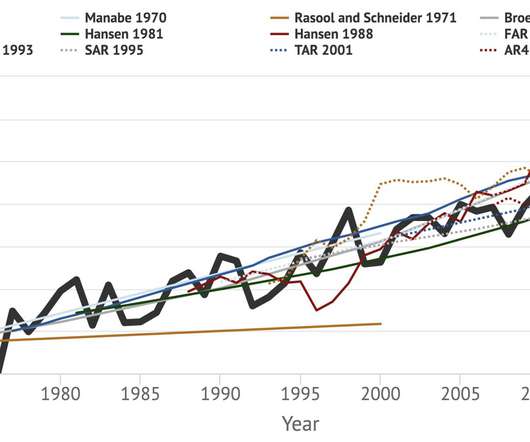A Nobel pursuit
Real Climate
OCTOBER 12, 2021
What they showed are the distinct fingerprints of two kinds of forcing; increasing solar activity which warms all parts of the atmosphere, and carbon dioxide increases which warm the surface and troposphere, but cool the stratosphere and above. The basic issue stems from the different timescales of the ocean and atmosphere.











Let's personalize your content